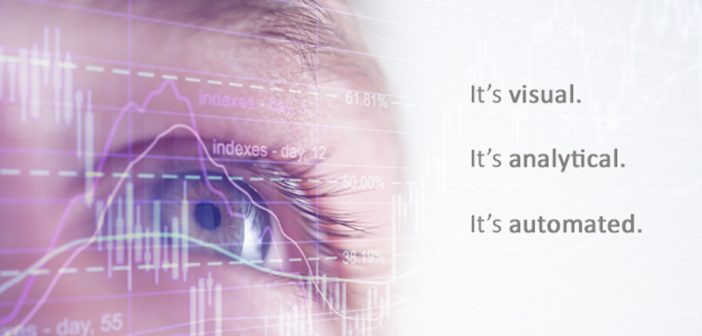There is no doubt that we are living in a new era of business intelligence (BI). In this new era, BI is no longer just a way to wrap data into various shiny packages for static visualisation. Instead, BI has started to get its own brain, and this new intelligence is changing the way that BI works.
It’s visual
Being visual has been a given for BI since the early days of management dashboards. Graphs and visuals make it easier for users to understand information. A picture may not tell a thousand words, but it can certainly make it easier to understand data. Despite a long history of visualisation, however, the market for visual analytics is still maturing. In my view, the potential for analytics to become mainstream and part of the daily decision cycle is yet to be fully realised.
The addition of intelligence to BI – largely through advanced analytics such as machine learning or artificial intelligence – is likely to require more and better visualisation techniques. It also offers the potential for different types of visualisation for nonvisual users, such as narration or chat-based interactivity.
It’s analytical
One key aspect in democratising analytics is to provide end users still using the traditional BI approaches with new tools, and in particular with approachable analytics provided within their existing BI applications. This “Trojan horse” approach helps to prepare them for the future of insight-driven decisions and allows them a gentle introduction to advanced analytics. More importantly, however, it embeds analytics into BI, and makes it a part of everyday thinking in the organisation.
It’s automated
Increasing familiarity with “smart analytics,” in turn, helps to drive user expectations. Users will come to expect more from analytics, and particularly faster, more accurate insights. It will therefore increasingly make sense to automate all parts of the analytical life cycle as far as possible.

As developments in BI continue to link more closely to analytics, the combination of the two is likely to move up the agenda for CIOs. Automation will become increasingly important for BI, and a lot of this automation will be driven by leveraging the strengths of analytics.
In my view, the successful use of analytics to drive automation will almost certainly depend on having and using an analytics platform. This will serve to weave together the necessary technologies like a fabric, supporting the end-to-end needs of all users, from top managers to analysts to business users. In practice, this means across the entire analytical life cycle, from data through discovery to deployment of insights. It also means across a broad range of users and use cases, allowing users to share both data and insights, and collaborate on analytics.
Beyond the AI hype, the question is how data-driven innovation can be brought to life. What steps are needed to move AI out of the lab and into business operations? Join SAS experts at an event near you and be inspired to lead your team in the new age of analytics.
The power of AI
Increasingly, it seems likely that automation of BI will be delivered through analytics based on artificial intelligence (AI). By using analytics platforms to support sharing and collaboration, analytics will become a core part of the business, with data-driven decision making the norm. But how will business users experience the value of AI within their BI?
I think that there will be five main themes:
- Improving suggestions, for example, for next-best offers for customers, driven by activities across the platform and its rule-based intelligence system, coupled with learning from increasing volumes of data.
- Narration, providing summaries that are largely predefined yet dynamic in their nature, and delivered as either text or voice, as an alternative or a supplement to more traditional visual methods.
- Conversation, powered by natural language processing, which enables systems to support individuals in driving actions and delivering insights in real time, and in response to customer activity, as well as allowing interaction and engagement with business information and intelligence.
- Recommendation, driven by advanced analytics, usually either machine learning or AI, leading the user from descriptive to predictive and finally prescriptive BI.
- Automation, combining and recombining options from the other four options to deliver a better and more seamless user experience and enable faster access to more accurate insights.
All of these areas will have a great influence on improving user productivity, maximising the efficiency from the underlying platform and driving accessibility. Together they will empower every user to contribute, share and collaborate, irrespective of their choice of application.
